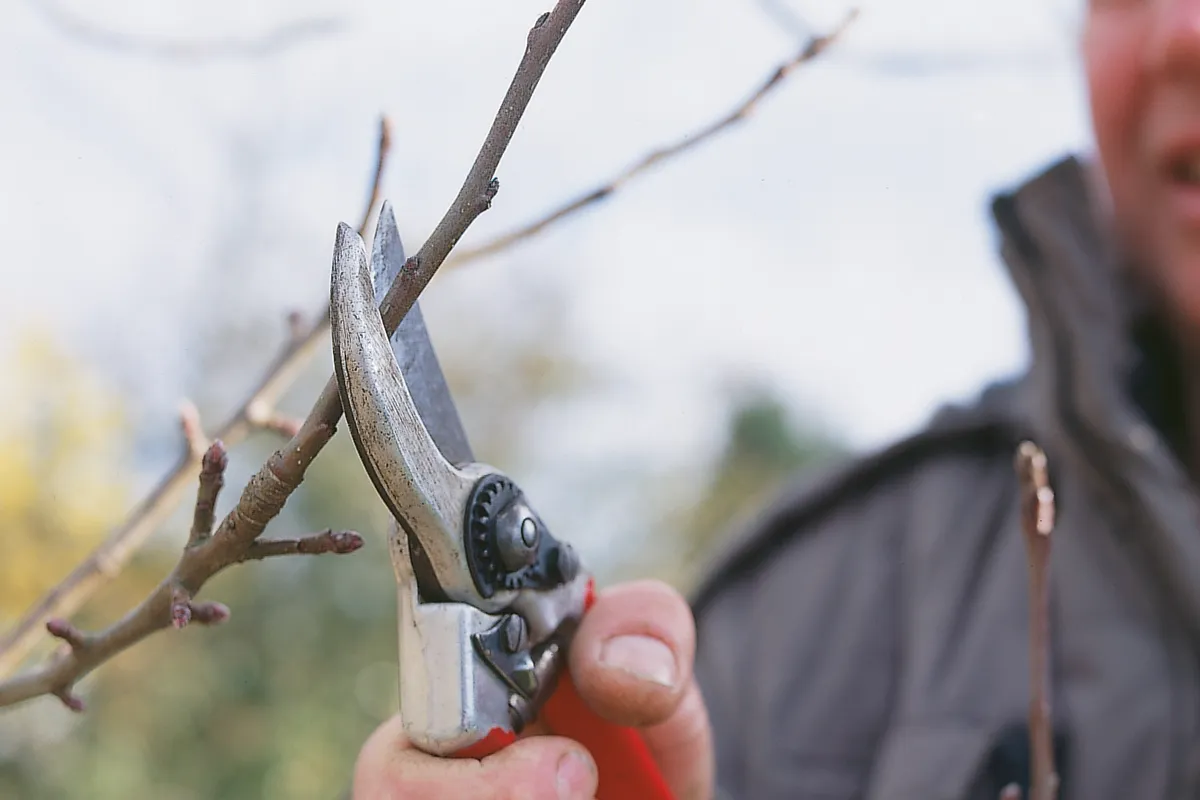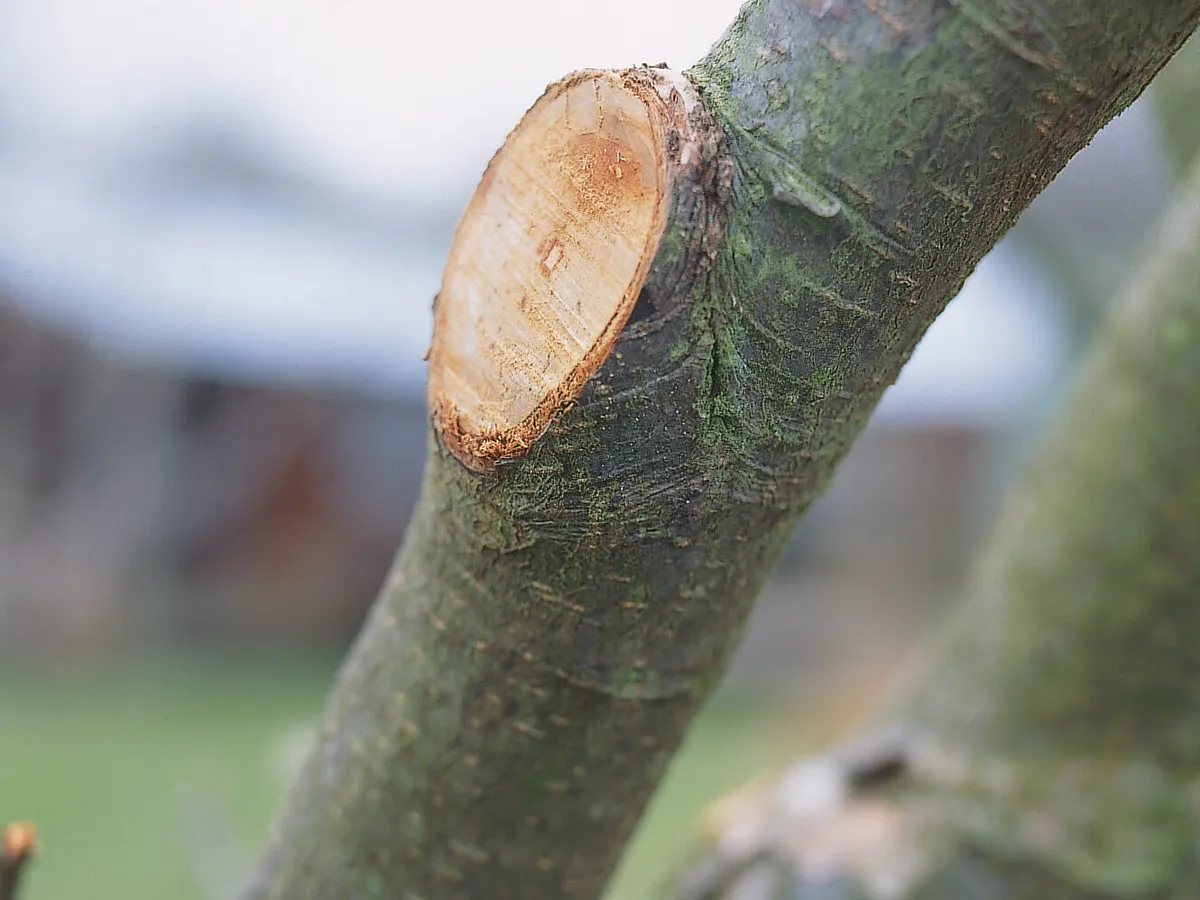An apple or pear tree is a beautiful addition to a garden - not only does it give beautiful blossom in spring, but it gives a wonderful harvest of apples and pears, many varieties of which are never available in the shops. There is an apple tree to suit every garden, as they are grown on varying rootstocks which control their ultimate size. You can even choose a variety that is local to your area.
To get tasty, easy-to-harvest fruits, established apple and pear trees need to be pruned properly. The principle behind pruning established apple and pear trees is to encourage the replacement of old growth with new, healthy shoots.
Use a lopper or pruning saw to prune your trees; for smaller branches you could use a folding pruning saw.
When to prune apple trees and pear trees
Apple and pear trees should be pruned during the winter, when they are leafless and dormant. In general, pears grow from older wood than apples and so should be pruned much more lightly. Trained apple trees such as cordons, fans, espaliers and stepovers should be pruned in summer.
Pruning apple trees and pear trees
How to prune apple trees and pear trees
Looking at where flowers on apple and pear trees appear along a stem will tell you whether your tree is a tip or spur-bearing cultivar.
On most apple and pear trees, the fruit grows from short woody shoots known as spurs.
A few apple tree cultivars are ‘tip bearers’, that is to say the fruit grows from the tips of two or three-year-old shoots.
Occasionally, as with the apple ‘Discovery’ fruit grows on the apple tree from both spurs and tips.
For more on pruning
- How to prune roses
- How to prune climbing plants
- How to prune apple and pear trees
- How to prune buddleja
- How to prune hedges

Pruning apple trees and pear trees that are spur-bearers
- Shorten each leader branch (the main branches that are growing outwards and upwards) on the apple tree by about a third of the previous year’s growth.
- Cut just above a bud that is pointing in the direction you want the stem to grow in.
- Leaf and stem buds are smaller and thinner than fruiting buds. Cut back any young side shoots to three or four buds and, finally, completely remove any vigorous shoots that are growing vertically.
Pruning tip-bearing apple trees and pear trees
- Cut each leader and side shoot back to the first bud to encourage more shoots for the following year.
- Do not prune back shoots that are shorter than 40cm.
Pruning overgrown apple trees and pear trees
Apple and pear trees that have been ignored and not pruned can be rescued and will quickly start producing fruit again. Wait until the end of winter – late January or early February.
- Begin by removing any branches that are dead, split, cracked or in any way damaged.
- Then remove any branches that are crossing towards the centre of the tree.
- If the tree is congested in the centre, remove enough of the branches to let light and air into the middle of the tree.
- Finally, thin out groups of spurs by cutting them right back to the branch, leaving about 25cm between spurs.
All of this will be a shock to the tree, so do not prune it at all the following year.
Removing large branches from apple and pear trees

- The weight of large apple and pear branches will make them tear into the trunk, damaging the tree, if you try to remove them in a single cut. Do the job in two stages.
- Make a cut about a third of the way through the underside of the branch you are removing, about 25cm from the apple tree trunk.
- Follow this with a second cut from the top of the branch, adjacent to the first cut, but further away from the trunk.
- Be careful when the branch falls away – they are always far heavier than they appear.
- You can then saw off the remaining stump.
- If there is a swollen ‘collar’ where the stump joins the apple or pear tree trunk, saw close to the outer edge of this collar.
- If there is no collar, cut parallel to the trunk, following the line of the trunk.
- In both cases you should make a single, clean cut. Within a few months the wound made by the cut will callous over.
In the past ‘wound dressings’ were painted on to the wood exposed by cutting to stop it drying out and protect it from insects and diseases. You can still buy these products but they are unnecessary – in fact, they could even seal in any disease that is on the cut. A healthy apple or pear tree should be able to heal wounds itself. I have never used any wound paints and have never had a problem with diseased wounds.
Here's perfect pruning equipment
